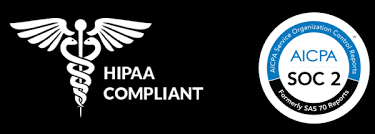The Vital Role of Care Coordination in Direct Primary Care Delivery
In the rapidly changing landscape of healthcare, Direct Primary Care (DPC) is gaining traction as a model that emphasizes patient-centered care and accessibility. At the heart of DPC lies care coordination, a critical component that ensures patients receive comprehensive and efficient treatment. This approach not only enhances patient outcomes but also offers significant benefits to employers, particularly in managing healthcare costs. As we delve into the importance of care coordination in DPC, we will also explore how analytics plays a pivotal role in optimizing these processes and ultimately how health compilers can demonstrate cost savings associated with improved care coordination.
Understanding Direct Primary Care
Direct Primary Care is a healthcare model where patients pay a flat monthly fee directly to their primary care providers. This arrangement eliminates the complexities of traditional insurance models, allowing for direct access to services without copays or deductibles. Patients benefit from longer appointment times, personalized care, and improved communication with their providers.
- Transparent Pricing: The fixed monthly fee covers a wide range of services, making healthcare costs predictable for both patients and employers.
- Enhanced Access: Patients enjoy same-day appointments and direct communication with their doctors through various channels like phone or messaging apps.
- Focus on Preventive Care: DPC emphasizes preventive measures, helping to identify health issues before they escalate into more serious conditions.
The Importance of Care Coordination
Care coordination involves organizing patient care activities among various healthcare providers to ensure comprehensive treatment.
This process is vital for several reasons:
1. Improved Patient Outcomes: Effective care coordination leads to better health outcomes by ensuring that all healthcare providers involved in a patient's care are informed and aligned. This reduces the risk of medical errors and ensures that patients receive consistent treatment. For instance, patients with chronic conditions benefit from coordinated efforts among their primary care physicians, specialists, and other healthcare providers.
2. Enhanced Patient Experience: Patients who experience coordinated care report higher satisfaction levels with their healthcare services. In a DPC model, the emphasis on building strong relationships between patients and providers fosters an environment where patients feel valued and understood. This personalized approach encourages patients to engage more actively in their health management.
3. Cost Efficiency: Care coordination can significantly reduce healthcare costs for both employees and employers. By streamlining communication among providers and avoiding unnecessary tests or procedures, employers can save money on healthcare expenses. Additionally, the proactive nature of coordinated care helps prevent costly hospitalizations by addressing health issues early on.
4. Better Management of Chronic Conditions: For employees with chronic illnesses, effective care coordination is essential. It allows for ongoing monitoring and management of their conditions, which can prevent complications and improve overall health outcomes. In a DPC setting, patients have easier access to their primary care providers, enabling timely interventions when needed.
The Role of Analytics in Care Coordination
Analytics plays an increasingly vital role in enhancing care coordination within Direct Primary Care settings. By leveraging data analytics, healthcare providers can gain insights that drive better decision-making and improve patient outcomes.
1. Identifying High-Risk Patients
Analytics-driven technologies help care managers identify high-risk patients who would benefit most from coordinated care programs. By analyzing data from electronic health records (EHRs), claims data, and social determinants of health, providers can pinpoint individuals who may require additional support or intervention.
2. Enhancing Patient Engagement
Data analytics can also improve patient engagement by providing insights into individual patient needs and preferences. With this information, providers can tailor communication strategies that resonate with patients, encouraging them to take an active role in their health management 34.3. Streamlining Care Processes
By analyzing patterns in patient data, healthcare organizations can optimize workflows and resource allocation. For example, predictive analytics can forecast patient demand for services, allowing practices to adjust staffing levels accordingly 56. This not only improves efficiency but also enhances the quality of care provided.
4. Monitoring Outcomes
Analytics enables continuous monitoring of patient outcomes over time. By tracking key performance indicators related to care coordination—such as hospital readmission rates or patient satisfaction scores—providers can identify areas for improvement and make data-driven adjustments to their care strategies 7.
How Care Coordination Benefits Employers
For employers looking to improve employee health while managing expenses effectively, investing in Direct Primary Care with robust care coordination offers several advantages:
1. Reduced Healthcare Costs
By implementing DPC with effective care coordination, employers can lower their overall healthcare spending through predictable monthly fees and reduced emergency room visits due to proactive health management.
2. Increased Employee Productivity
Healthier employees are more productive employees. When employees have access to coordinated care that addresses their health needs promptly, they are less likely to miss work due to illness or chronic conditions.
3. Enhanced Employee Satisfaction and Retention
Offering a DPC model with strong care coordination demonstrates an employer's commitment to employee well-being, leading to higher satisfaction rates and improved retention.
Conclusion: The Impact of Health Compilers on Cost Savings
As organizations seek ways to quantify the benefits of enhanced care coordination within DPC models, health compilers play a crucial role in demonstrating cost savings associated with these initiatives. Health compilers aggregate data from various sources—such as claims data, EHRs, and patient surveys—to provide comprehensive insights into how coordinated care impacts both clinical outcomes and financial performance.
By analyzing this data, employers can identify trends that illustrate the effectiveness of coordinated care in reducing costs related to hospitalizations, emergency visits, and overall healthcare utilization. Furthermore, these insights enable employers to make informed decisions about their health benefits strategy while fostering a healthier workforce.
In summary, the integration of effective care coordination within Direct Primary Care delivery not only enhances patient outcomes but also offers significant advantages for employers seeking to manage healthcare costs effectively. By leveraging analytics and utilizing health compilers for data-driven insights, organizations can optimize their approach to employee health management—ultimately leading to healthier employees and a more sustainable business model in today’s competitive landscape.




